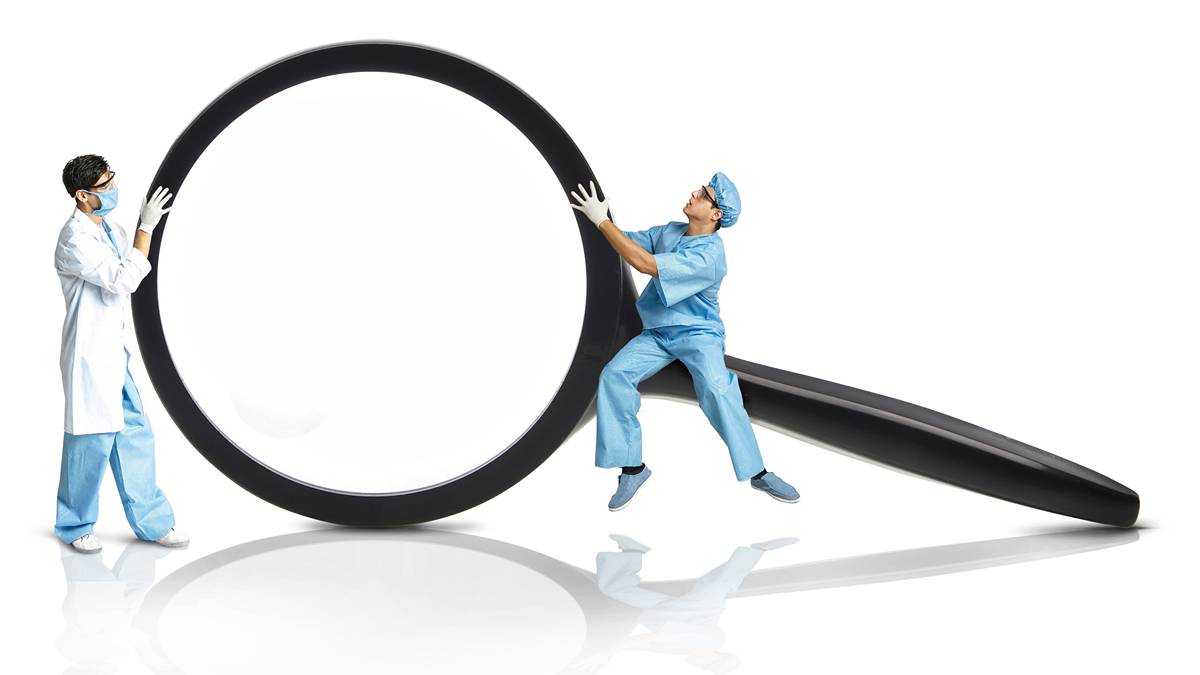Health Check: Imagion is crossing the t’s and dotting the i’s on crucial breast imaging trial submission

Imagion is getting down to the nitty-gritty details of a planned phase II breast cancer imaging study. Pic:Getty Images
- Current cancer imaging tools are “not good enough”, Imagion chief Bob Proulx says
- Micro-x announces second grant in the space of two days
- Race Oncology wins Korean trial assent … in South Korea, of course
Imagion Biosystems (ASX:IBX) says it’s “progressing strongly” to a US Investigational New Device (IND) submission that would pave the way for a phase II breast cancer detection trial.
The company hopes to lodge the paperwork and start the trial before the end of calendar 2025, executive chair Bob Proulx told the company’s extraordinary general meeting today.
Imagion’s Magsense is a magnetic resonance imaging (MRI) imaging agent that enables clinicians to detect cancer earlier and with greater precision.
The tech provides a non-radiation means of detecting cancers that cannot be unearthed by conventional methods.
Applications include Her2-positive breast cancer, prostate cancers, and ovarian cancers.
Industry can do better
Proulx said globally the healthcare industry “doesn’t do a good enough job” diagnosing cancer, despite spending US$100 million a year on the quest.
“That’s because the diagnostic tools we have today are still not good enough,” he said.
“An MRI might find something suspicious, but there is nothing in a conventional MRI scan that indicates if a lesion is benign or malignant.”
He adds “suspicion is not certainty and that is what we are trying to change”.
The company carried out a previous phase I Magsense study, also for Her-2 breast cancers.
The trial established the tech can be applied safely in humans and that it works with existing MRI units.
“For our shareholders this means the business opportunity we are pursuing is not theoretical,” he said.
“We are now crossing the t’s and dotting the i’s on our IND package.”
Imagion held the virtual EGM to approve its recent $3.5 million placement.
The raising was done at 1.5 cents a share, with one-for-one attached options exercisable at 4 cents.
With Imagion shares trading at more than 5 cents today, subscribers are happy campers.
Race is at the starter’s line for Korean trial
Meanwhile, Race Oncology (ASX:RAC) has won South Korean assent to kick off a phase I trial. This is for its repurposed drug candidate RC-220 in solid cancers.
By way of an IND to the Republic of Korea Ministry of Food and Drug Safety, this paves the way for patient recruitment across four sites.
The trial will assess the safety, tolerability and pharmacokinetics of RC-220, in combo with the chemotherapy doxorubicin.
RC-220 is based on the active ingredient bisantrene, which was used for acute myeloid leukemia in the 1980s but then fell from view.
Helpfully, the Korean IND process apples the same “rigour” as US or European IND applications.
In March, our Therapeutic Goods Administration approved the local leg of the proposed trial. Hong Kong’s health gatekeepers did the same last September.
Micro-x pockets more grant funding
A leader in cold cathode X-ray technology, Micro-X (ASX:MX1) has received up to US$1.7 million ($2.5 million) more in US government funding to develop its passenger self-screening checkpoint tech for airports.
The US Department of Homeland Security (DHS) is advancing the funding, with $400,000 committed now and the rest subject to milestones.
This extension takes the total contracted value of the company’s DHS funding to US$20.9 million ($31.7m).
“This funding will go towards the further advancement of our detection software, a critical element of an effective checkpoint,” Micro-x CEO Kingsley Hall says.
Currently, authorities are testing one Micro-x checkpoint and a further two baggage scanners.
The company is committed to supply two more checkpoints, in view of testing in a live airport setting.
The news comes after the company yesterday said it had secured $4.4 million in an Australian federal grant. These funds will further the company’s lightweight stroke detection device intended for ambulances.
Called Head CT, the computed tomography device weighs about 70 kilogram, one-tenth the size of a standard CT unit.
Bestowed under the federal Industry Growth Program, the grant will fund development of a device prototype over two years.
This includes fitting an ambulance with the unit and carrying out conduct real world patient imaging and workflow testing.
This effort is in league with the with the South Australian Ambulance Service and Royal Adelaide Hospital.
Subject to clinical and ethics approval, Micro-x then will launch a full patient imaging trial.
Micro-x expects the project provide the necessary data to take the device to regulatory submission stage (for use in an ambulance).
In partnership with the Australian Stroke Alliance, the company earlier received $8 million of funding from the federal Medical Research Future Fund.
‘Nah, don’t know’, Hydrix tells ASX
Medical device innovator Hydrix (ASX:HYD) says it can’t explain why its shares vaulted up to 80% on Tuesday, albeit from a low base of 1.3 cents.
The company was answering a price query from the ASX, which pondered whether confidential information had been aired.
The company did say it undertook “ongoing reviews of its assets and businesses” and capitalised on value-adding opportunities.
“At this time, any information and associated discussions regarding any such opportunities remain embryonic and inconclusive.”
Hydrix makes devices on behalf of other parties and derives services income.
The company focuses on class-three medical devices that are vital for sustaining life, such as cardiac assist tools.
Put another way, if they malfunction the consequences are severe … such as death.
The company also has three investments in client companies, worth $3.6 million.
The biggest is a $2.65 million stake in Gyder Surgical. In February the US Food and Drug Administration approved the Gyder Hip System for sale in the US.
The Gyder Hip System is a computer-assisted navigation tool designed to improve accuracy and efficiency in hip replacement surgery.
At Stockhead, we tell it as it is. While Imagion, Race and Micro-x are Stockhead advertisers, they did not sponsor this article.
Related Topics

UNLOCK INSIGHTS
Discover the untold stories of emerging ASX stocks.
Daily news and expert analysis, it's free to subscribe.
By proceeding, you confirm you understand that we handle personal information in accordance with our Privacy Policy.








